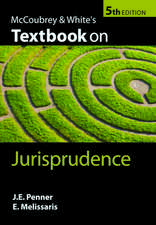Visions of Modernity: Representation, Memory, Time and Space in the Age of the Camera
Autor Scott McQuireen Limba Engleză Paperback – 7 dec 1997
Preț: 493.34 lei
Preț vechi: 580.41 lei
-15% Nou
Puncte Express: 740
Preț estimativ în valută:
94.40€ • 98.76$ • 78.42£
94.40€ • 98.76$ • 78.42£
Carte tipărită la comandă
Livrare economică 03-17 aprilie
Preluare comenzi: 021 569.72.76
Specificații
ISBN-13: 9780761953012
ISBN-10: 0761953019
Pagini: 288
Dimensiuni: 156 x 234 x 15 mm
Greutate: 0.41 kg
Ediția:1
Editura: SAGE Publications
Colecția Sage Publications Ltd
Locul publicării:London, United Kingdom
ISBN-10: 0761953019
Pagini: 288
Dimensiuni: 156 x 234 x 15 mm
Greutate: 0.41 kg
Ediția:1
Editura: SAGE Publications
Colecția Sage Publications Ltd
Locul publicării:London, United Kingdom
Recenzii
`McQuire has produced a comprehensive and lucidly written account of the camera-driven transformations across the period we may now retrospectively call "modernity"' - Victor Burgin, Unviersity of California, Santa Cruz
`Visions of Modernity offers an admirable overview of modern visual culture. But, more than this, it takes us through a wide range of debates in cultural theory. McQuire has produced an encompassing, and very impressive work of intellectual synthesis' - Kevin Robins, University of Newcastle-upon-Tyne
`Visions of Modernity offers an admirable overview of modern visual culture. But, more than this, it takes us through a wide range of debates in cultural theory. McQuire has produced an encompassing, and very impressive work of intellectual synthesis' - Kevin Robins, University of Newcastle-upon-Tyne
Cuprins
Introduction
The Origin of the Image: The Image of the Origin
PART ONE: THE RUINS OF REPRESENTATION
Photomimesis
The Geometric Universe
Writing with Light
The Mechanical Eye of Reason
Promiscuous Meanings
The Mobile Frame
Flickering in Eclipses
The Ends of Representation
PART TWO: PHOTOMNEMONICS
The Eye of the Camera Faces Backwards
The Law of Progress
The Crisis of Memory
Amnesic Cultures
Eternity's Hostage
The Camera and the Archive
Intolerable Memories
Biodegradable Histories
PART THREE: THE NEW PLASTICITY OF SPACE AND TIME
Pure Speed
From Transport to Teleport
Reconstructing `the World'
The Myth of the Centre
In the Neon Forest
Interzones
Unstable Architectures
Telepresence and the Government of Time
The Origin of the Image: The Image of the Origin
PART ONE: THE RUINS OF REPRESENTATION
Photomimesis
The Geometric Universe
Writing with Light
The Mechanical Eye of Reason
Promiscuous Meanings
The Mobile Frame
Flickering in Eclipses
The Ends of Representation
PART TWO: PHOTOMNEMONICS
The Eye of the Camera Faces Backwards
The Law of Progress
The Crisis of Memory
Amnesic Cultures
Eternity's Hostage
The Camera and the Archive
Intolerable Memories
Biodegradable Histories
PART THREE: THE NEW PLASTICITY OF SPACE AND TIME
Pure Speed
From Transport to Teleport
Reconstructing `the World'
The Myth of the Centre
In the Neon Forest
Interzones
Unstable Architectures
Telepresence and the Government of Time
Notă biografică
Scott McQuire completed his PhD in the Politics Department at the University of Melbourne in 1995. He has a strong interest in interdisciplinary research and has lectured in disciplines including politics, sociology, cinema studies, art and architecture, and media and communication. Scott has held a number of research fellowships including a visiting fellowship at the Department of Film, Theatre and Television, UCLA (1998), an ARC Australian Postdoctoral Fellowship (1999-2000), and a visiting fellowship at the Celeste Bartos International Film Study Center, Museum of Modern Art, New York (2000). He returned to the University of Melbourne to help establish the Media and Communication Programme in 2001. He is an active researcher who has been a Chief Investigator on six Australian Research Council funded projects. He has also received funding from the Australia Council for the Arts, and has undertaken research consultancies for the Communications Law Centre, the Australian Film Commission and the Australian Key Centre for Media and Cultural Policy.
Descriere
This overview of modern visual culture explores the relationship between technology, society and identity which underpins contemporary `media culture'. The book is not so much about the camera's field of vision: it is concerned with processes of modernization and the dramatic changes which characterize modernity.















